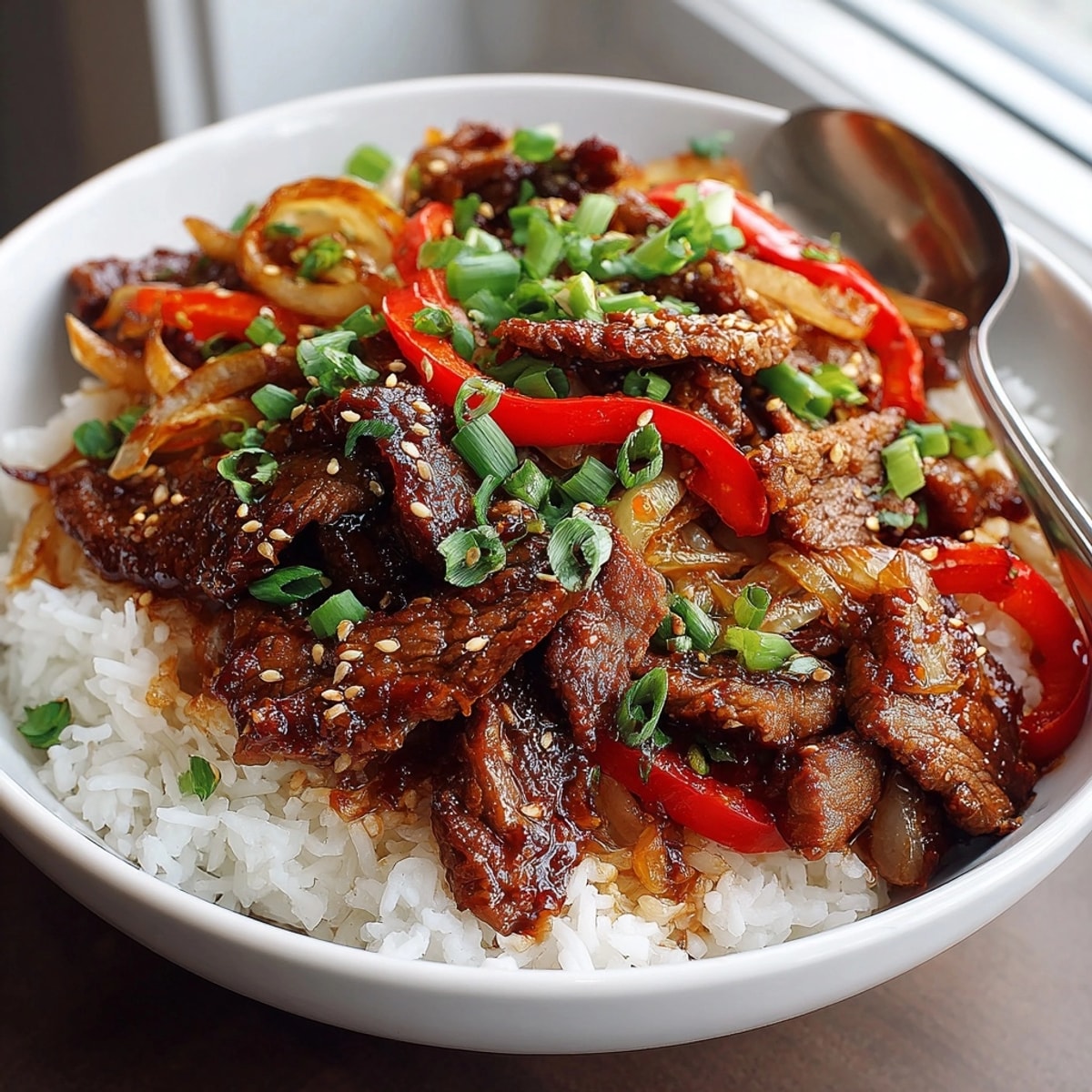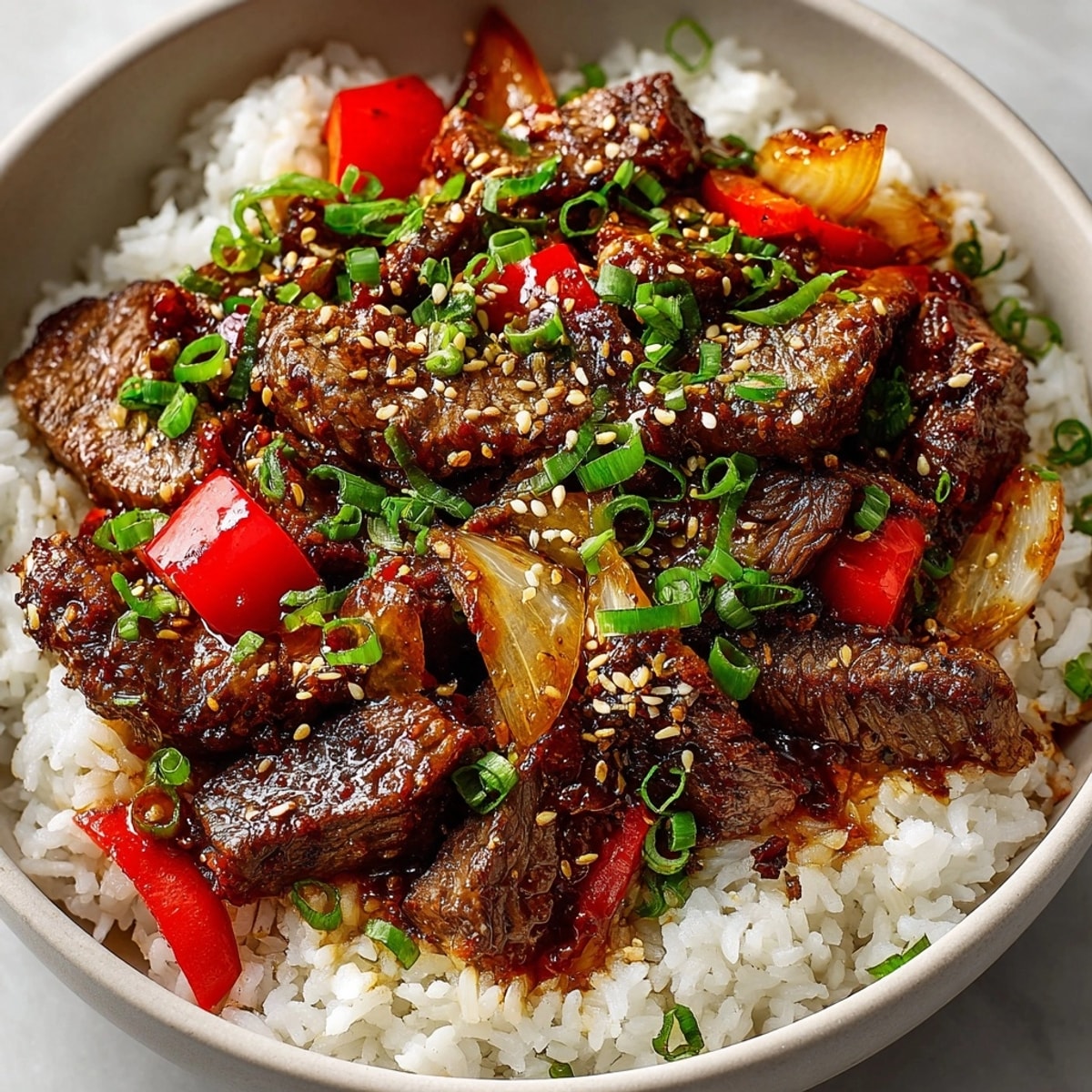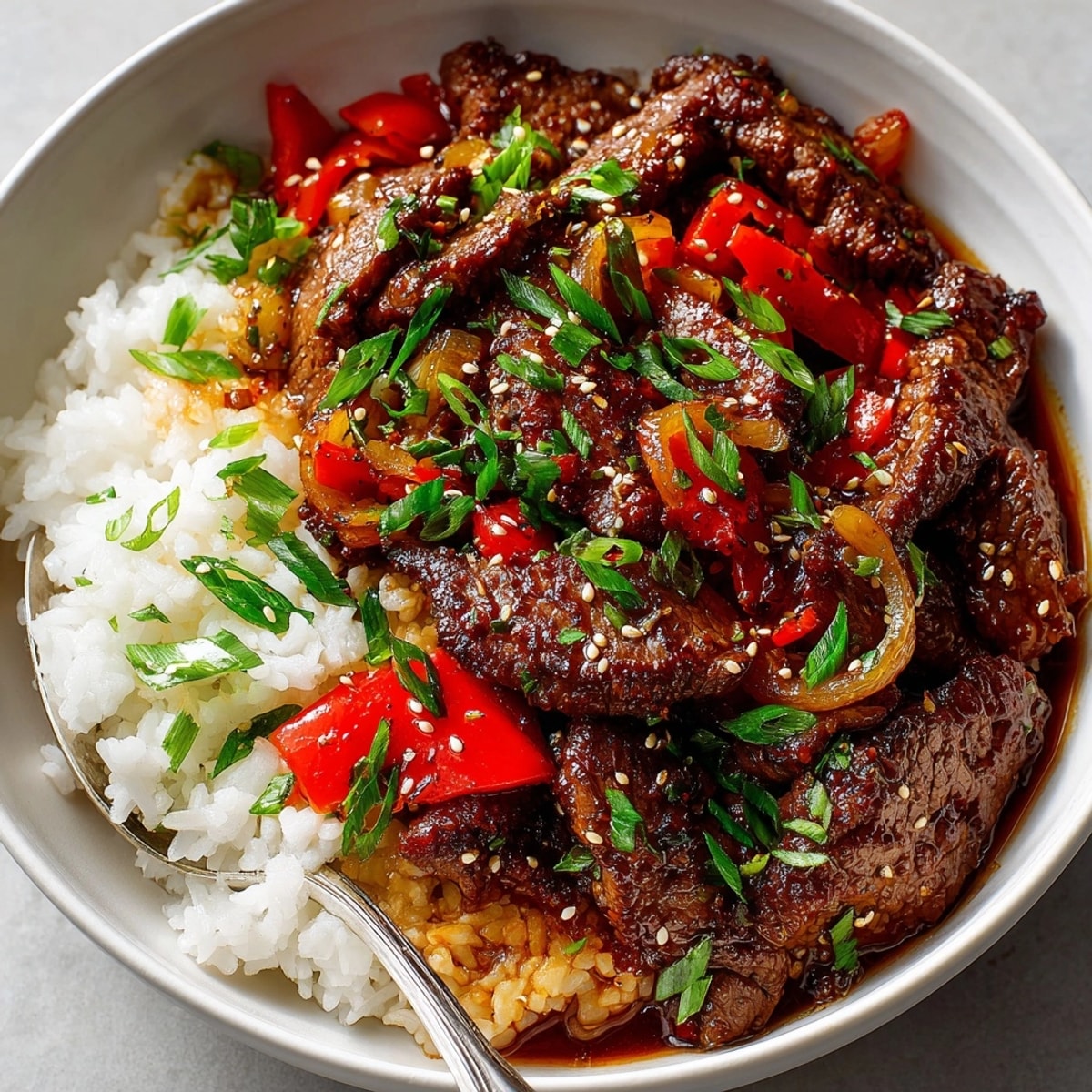 Pin It
Pin It This Korean-inspired gochujang beef rice skillet is my go-to when I want a comforting meal with punchy flavor and minimal fuss. Brimming with juicy ground beef, crisp veggies, and a sweet-spicy gochujang sauce, everything comes together in one pan for quick weeknight magic and truly satisfying taste.
For me, this dish is a lifesaver after long days. The way the sauce bathes every grain of rice reminds me of weekday dinners with my family, all of us gathered around the skillet for seconds.
Ingredients
- Ground beef: eighty five or ninety percent lean I like to choose beef with a touch of fat for best flavor
- Cooked rice: day old or freshly made both work Short grain rice gives a chewy texture
- Gochujang: Korean chili paste brings heat and sweetness Reach for a good brand with minimal additives
- Soy sauce: adds savory depth I opt for a naturally brewed variety
- Brown sugar: balances the spice look for soft fresh sugar for easy mixing
- Garlic: fresh cloves provide a punch Always pick tight firm heads
- Ginger: fresh root lends warmth and zing Choose plump pieces with smooth skin
- Carrot: shredded for crunch and color Use firm bright carrots
- Red bell pepper: chopped for sweet crunch Select ones with glossy skin
- Scallions: a fresh finishing touch Pick ones with crisp green tops
- Sesame oil: imparts toasty aroma Use pure toasted oil for best flavor
- Toasted sesame seeds: for garnish opt for freshly toasted seeds for extra nuttiness
Instructions
- Prep the essentials:
- Have all ingredients chopped and measured before starting Slice scallions keep whites and greens separate
- Sauté the aromatics:
- Heat a large skillet over medium Add a drizzle of neutral oil Add the white part of scallions plus garlic and ginger Cook for two to three minutes stirring often until fragrant
- Brown the beef:
- Add ground beef breaking it up with a spatula Cook for five to six minutes until browned and most of the pink is gone Drain any excess fat if needed
- Veggie boost:
- Stir in shredded carrot and bell pepper Sauté for another three to four minutes until just tender but still bright
- Build the sauce:
- In a small bowl whisk together gochujang soy sauce brown sugar and a splash of water Pour sauce into skillet stirring to coat beef and veggies thoroughly
- Rice rendezvous:
- Add cooked rice to the skillet breaking up any clumps Stir until rice is hot and well combined with the saucy mixture
- Finish and garnish:
- Drizzle with sesame oil Scatter scallion greens and toasted sesame seeds on top Serve warm and enjoy every saucy bite
 Pin It
Pin It The gochujang really takes this dish to the next level with its deep smokiness and the perfect kick. One of my best memories is making this for my sister when she visited after a long trip she raved about the flavor and took the recipe home.
Storage Tips
Let leftovers cool before storing in airtight containers Keeps well in the fridge for three to four days To reheat sprinkle with a little water and cover to keep the rice moist
Ingredient Substitutions
Swap the ground beef for ground turkey or chicken for a lighter version Use tamari to make it gluten free Any crunchy veggie works try broccoli zucchini or snap peas
Serving Suggestions
Top each bowl with a fried egg for extra richness Serve with kimchi or pickled veggies on the side for tangy crunch Add a drizzle of extra gochujang if you love spicier food
 Pin It
Pin It Quick meal for busy weeknights Customizable with almost any veggie Big on flavor without lots of work
Recipe FAQs
- → What is gochujang and how does it enhance the dish?
Gochujang is a Korean chili paste that imparts a spicy-sweet kick and deep umami flavor to beef and rice dishes.
- → Can I use other proteins instead of beef?
Chicken, pork, or tofu work well and soak up the savory sauce, making the skillet versatile for different preferences.
- → What type of rice is best for this skillet?
Short-grain white rice retains moisture and absorbs flavors, but long-grain or brown rice can be used as alternatives.
- → Which vegetables pair well in this dish?
Bell peppers, carrots, peas, and mushrooms complement the robust flavors and add color and texture.
- → How do you garnish for authentic flavor?
Add sliced green onions, sesame seeds, and a drizzle of sesame oil to finish with traditional Korean touches.
- → Is this skillet suitable for meal prep?
Yes, it reheats well and keeps flavor and texture, making it ideal for preparing meals in advance.